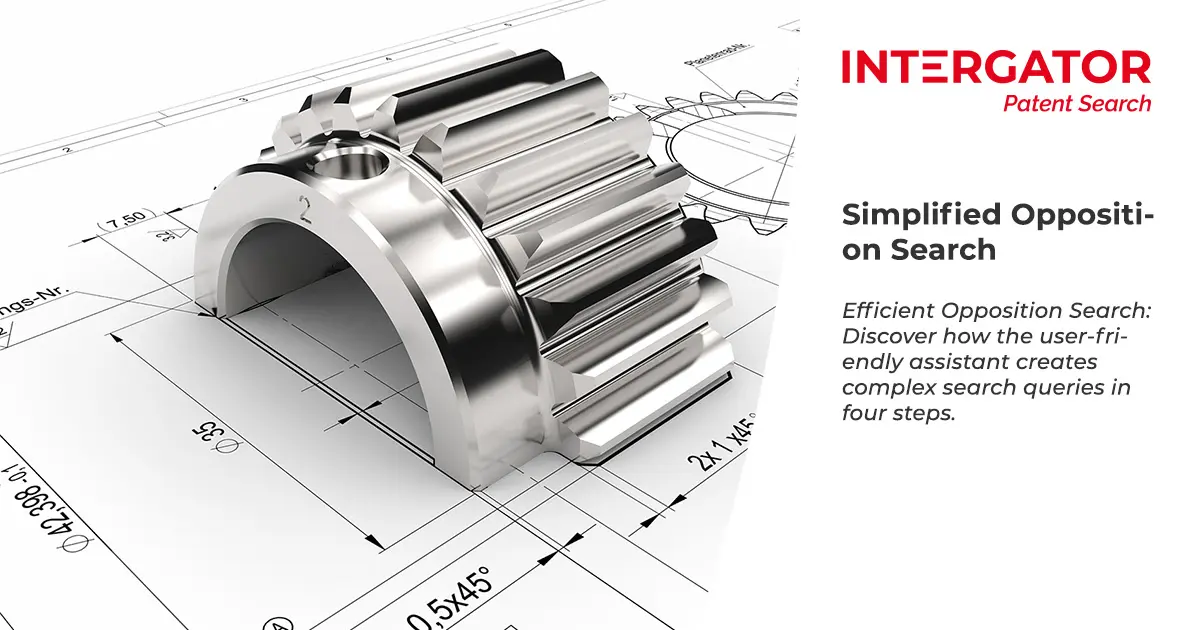Opposition searches are a crucial aspect of patent law. They serve to review the novelty and inventive step of an already granted patent. This search investigates whether there are any prior documents or publications that could challenge the patent claims. The goal is to identify relevant prior art documents that prove the patent was unjustifiably granted. Opposition searches are essential not only for potential opponents but also for patent holders to prepare the defense of their patent and identify possible weaknesses. Therefore, a thorough and systematic search is indispensable for making well-founded decisions in patent litigation.
INTERGATOR Patent Search offers a user-friendly assistant specifically designed for opposition searches. This assistant guides the user through the process in four simple steps to determine essential parameters and create a complex search query.
In the first step, basic information such as the affected patent and relevant technical fields are requested. The second step involves detailed questions about specific features and technical details of the invention. The third step is dedicated to defining search criteria for relevant literature and prior art documents. In the fourth and final step, the assistant reviews the collected information and generates a precise and comprehensive search query.
This structured approach makes it easier to identify relevant documents and realistically assess the chances of a successful opposition. The following example demonstrates how this assistant works in practice and highlights the benefits it offers for opposition searches.
Opposition Search Example
On the homepage of INTERGATOR Patent Search, we first select the opposition search assistant. This step initiates a guided process specifically designed to maximize the efficiency and accuracy of our search.
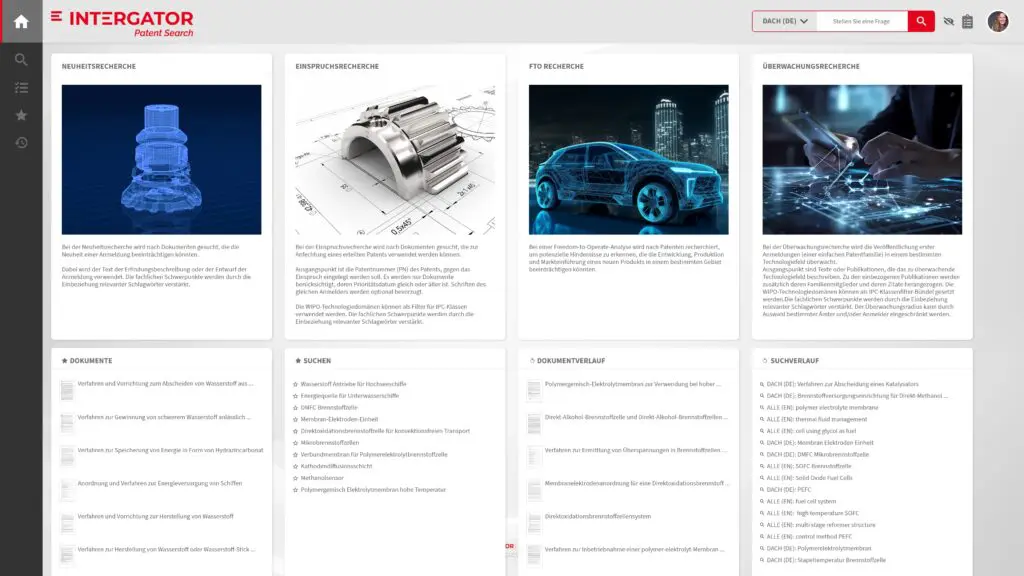
Step 1: Entering the Patent Number
Our search begins with entering the patent number DE102012214867 into the designated field. This number serves as the starting point for further analysis and research.

INTERGATOR first checks whether the entered number is a valid patent number. This verification is crucial to ensure we are accessing correct and relevant data. After validating the number, the system provides initial basic information about the patent, such as the title, publication number, and a brief summary. This information gives us an initial overview and helps structure the further research process.
Step 2: Selection of Keywords
In the next step, INTERGATOR guides us to the keyword entry. The system automatically extracts the core concepts from the patent application and presents them to us. Additionally, INTERGATOR offers further keywords, which are displayed in grey.
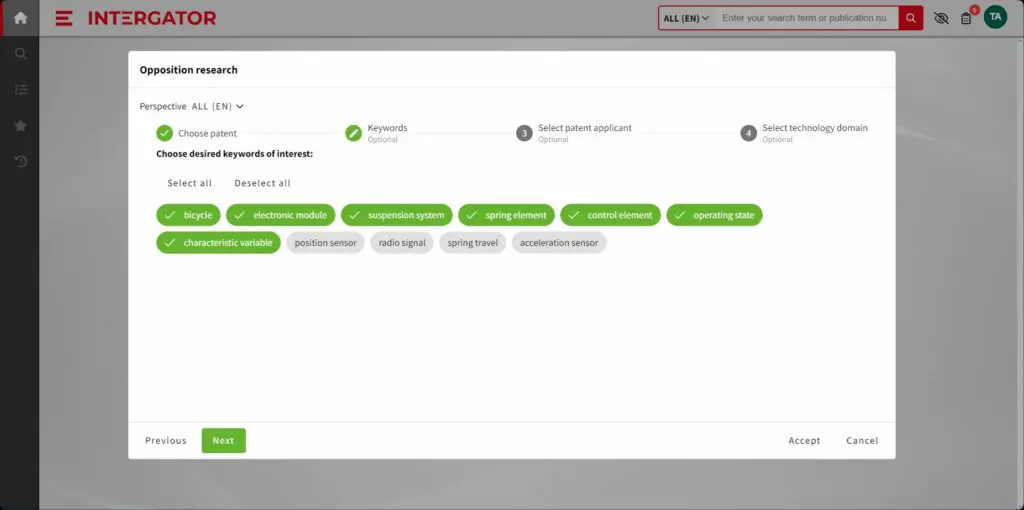
By selecting and adding these keywords, we can further refine the focus of our search. The keywords help make the search query more precise and ensure that we capture all relevant documents and information that might be important for the opposition.
Step 3: Selection of the Applicant
In the next step of the opposition search assistant, we have the option to select the applicant of the patent. This option allows us to specifically search for documents related to the particular applicant. This can be especially useful for gaining a comprehensive understanding of the applicant’s patent activities and strategies.

By entering the applicant’s name or selecting from a list of possible applicants, we can ensure that our search includes all relevant patents and publications submitted by the same applicant. This enhances the accuracy of our opposition search and increases the likelihood of finding relevant prior art documents that could challenge the existing patent.
Step 4: Selection of the Technology Domain
In the final step of our opposition search, we specify the technology domain to which the patent belongs. INTERGATOR automatically identifies the most appropriate technology domain based on the previously entered information and suggests it to us. Additionally, the system presents other technology domains that could also be relevant.
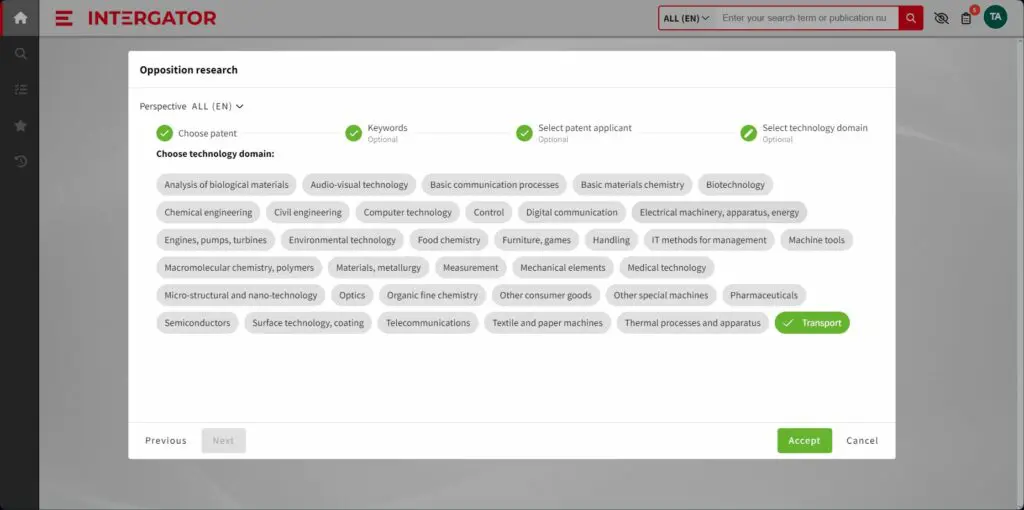
By selecting the appropriate technology domain, we ensure that our search is focused and precise. This categorization helps refine the search results and ensures that we capture all relevant documents and publications that could be significant for our opposition.
The Final Query
After selecting the appropriate technology domain, INTERGATOR generates a complex search query that incorporates all the specified parameters. This precise query forms the foundation for a comprehensive and targeted opposition search.
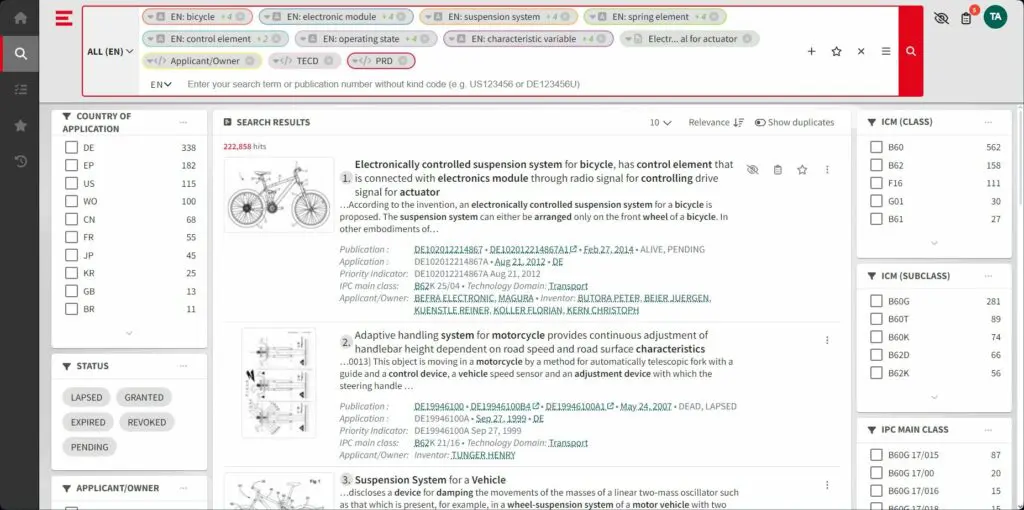
In detail
The original patent document
The complete integration of the original document ensures that no important information is overlooked and that the search results are as precise and comprehensive as possible.

Extending the keywords
Each keyword is automatically expanded by INTERGATOR with additional semantically similar keywords to enhance the effectiveness of the search. This expansion ensures that the search queries are more comprehensive and include synonyms and related terms. This increases the likelihood of finding all relevant documents and publications that are important for the opposition search. This semantic expansion of keywords contributes to a deeper and more accurate analysis, which is essential for a well-founded opposition search.
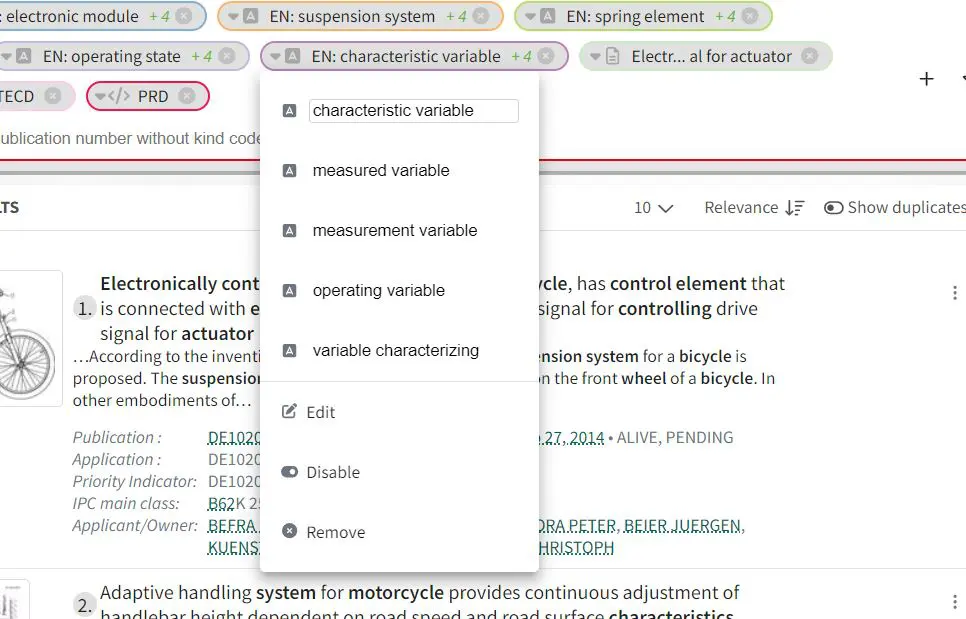
Conclusion
Using INTERGATOR Patent Search for opposition searches provides a structured and efficient way to achieve comprehensive and precise results. The step-by-step input process, automatic expansion of keywords, and integration of the full patent document significantly simplify and enhance the search. With these tools, users can ensure they consider all relevant information and documents, greatly increasing the chances of a successful opposition. Thus, INTERGATOR proves to be an indispensable tool for everyone involved in the field of patent law.


